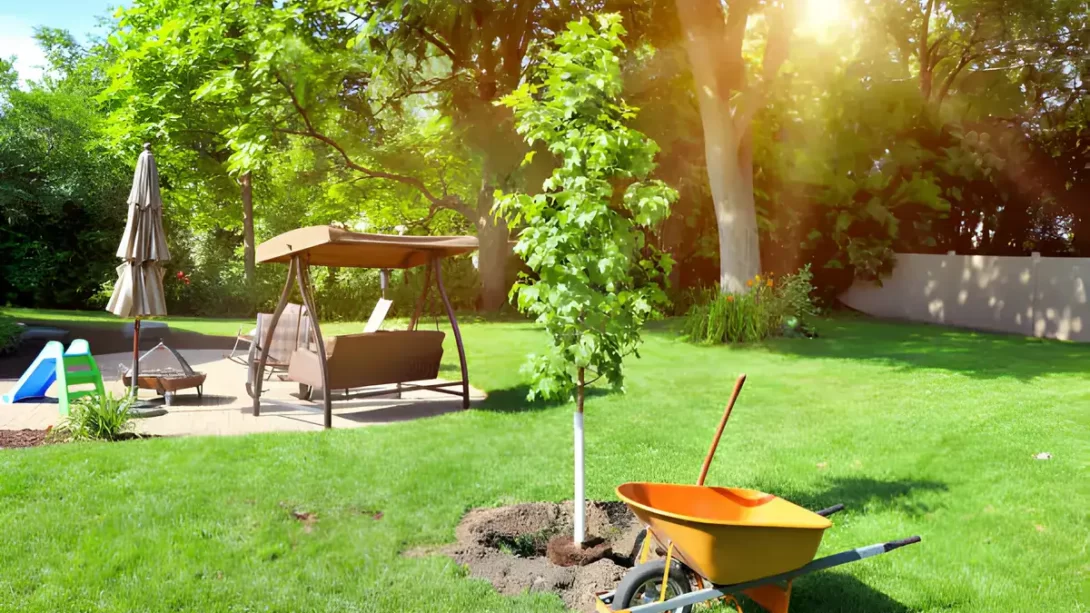Maple trees, with their majestic stature and vibrant seasonal colors, are a cherished addition to many landscapes. These trees, ranging from the fiery reds of the Acer rubrum to the stately shade of the Acer saccharum, offer beauty and diversity to gardens and yards. Understanding their needs and characteristics is crucial for successful planting and growth. This article guides you through selecting, planting, and caring for your maple tree, ensuring it thrives in your garden.
Choosing the Right Maple Tree
Selecting the right species of maple tree is essential for its success in your landscape. The Acer saccharum, commonly known as the Sugar Maple, is famed for its stunning fall foliage and is a staple in colder climates. On the other hand, the Acer rubrum, or Red Maple, is adaptable to a broader range of environments and is known for its striking red leaves. When choosing a maple tree, consider factors such as your climate zone, soil type, and the space available in your garden. Each species has unique requirements and characteristics, so it’s important to pick one that aligns with your local conditions and gardening goals.
When to Plant Maple Trees
Timing is critical when planting maple trees. The ideal time for planting is during the dormant season, after leaf drop in fall or before bud break in spring. This timing allows the tree to establish roots in its new location before the stress of summer heat or winter cold. In cooler climates, spring planting is often preferable to give the tree a full growing season to establish. Conversely, in areas with milder winters, fall planting can be advantageous, as the cooler temperatures and increased rainfall can help the tree establish without the intense heat of summer. Understanding the seasonal patterns in your region will guide you in choosing the best time to plant your maple tree.
Selecting the Planting Site
The right location is vital for your maple tree’s growth and health. Maple trees generally require a spot with full to partial sunlight. However, some varieties can tolerate shade. Assess the sunlight patterns in your garden to find a suitable location. Soil drainage is another critical factor; maples do not thrive in waterlogged conditions. If your soil tends to retain water, consider a raised bed or an area with better drainage. Also, be mindful of the tree’s mature size when selecting a site. Ensure it is far enough from buildings, power lines, and other structures to allow ample room for growth.
Soil Preparation for Maple Trees
Preparing the soil before planting enhances your maple tree’s chances of thriving. Test your soil’s pH and nutrient levels; maples generally prefer slightly acidic to neutral pH. Amend the soil with organic matter to improve its structure and fertility, especially if you have clay or sandy soil. This step is crucial for providing the roots with a healthy environment for growth. A well-prepared soil ensures proper nutrient uptake and root expansion, which are key to the tree’s overall health and longevity.
Planting Step-by-Step
- Digging the Hole: The hole should be twice as wide as the root ball and the same depth. This size ensures enough space for the roots to spread without being constricted. Avoid digging too deep as settling can cause the root collar to be buried, leading to health issues for the tree.
- Preparing the Tree: Before planting, hydrate the tree, especially if it’s been in a pot or burlap. Gently loosen the roots if they are densely packed or circling, encouraging them to grow outward into the soil.
- Placing the Tree: Set the tree in the hole, ensuring that it’s standing straight. The top of the root ball should be level with the ground surface. Adjust the depth of the hole if necessary.
- Backfilling the Hole: Fill the hole with the removed soil, gently but firmly packing it around the root ball. Avoid over-packing, which can hinder root growth and water penetration.
- Watering and Mulching: After planting, water the tree thoroughly to settle the soil and eliminate air pockets. Apply a layer of organic mulch around the base, keeping it a few inches away from the trunk. Mulch helps retain moisture, regulate soil temperature, and reduce weed competition.
Aftercare and Maintenance
Proper aftercare is crucial for your newly planted maple tree. Initially, water the tree deeply once a week, allowing the soil to dry slightly between waterings. This frequency may need to be adjusted depending on weather conditions and soil type. Over the first few seasons, monitor your tree closely for water needs, adjusting as the tree establishes and grows.
Pruning is an important aspect of maple tree care, promoting healthy growth and a pleasing shape. Prune during the dormant season, removing any dead, damaged, or crossing branches. Avoid excessive pruning, especially in the tree’s early years, as this can stress the young tree. Additionally, keep an eye out for signs of pests or diseases, such as discolored leaves or unusual bark patterns. Early detection and treatment are key to managing these issues effectively.
Conclusion
Planting a maple tree can be a rewarding experience, offering years of beauty and shade to your garden. By carefully selecting, planting, and caring for your maple tree, you ensure its successful growth and development. Remember, patience is key; it takes time for a tree to establish and reach its full potential. Enjoy the process and the gradual transformation your maple tree brings to your landscape.




